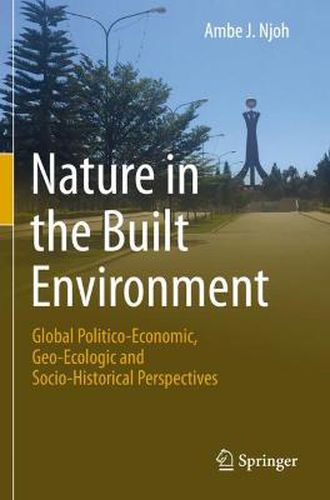Readings Newsletter
Become a Readings Member to make your shopping experience even easier.
Sign in or sign up for free!
You’re not far away from qualifying for FREE standard shipping within Australia
You’ve qualified for FREE standard shipping within Australia
The cart is loading…






This title is printed to order. This book may have been self-published. If so, we cannot guarantee the quality of the content. In the main most books will have gone through the editing process however some may not. We therefore suggest that you be aware of this before ordering this book. If in doubt check either the author or publisher’s details as we are unable to accept any returns unless they are faulty. Please contact us if you have any questions.
A good understanding of the status quo is necessary for the success of efforts to develop and maintain nature in built space. Accordingly, this book conducts an environmental scan of the context of these efforts in global perspective. In particular, it develops and employs a novel environmental scanning model (ESM) designed to rigorously analyze the political, economic, social, technological, ecological, cultural and historical (PESTECH) contexts of initiatives to promote biodiversity in the built environment. The focus is on four specific substantive areas of environmental policy, namely forestry, water, food, and energy. The units of analysis roughly correspond with the major United Nations Environmental Programme (UNEP) regions of the world, including sub-Saharan Africa, Middle-East and North Africa, Asia and the Pacific, Western Europe, North America, and Latin America and the Caribbean.
$9.00 standard shipping within Australia
FREE standard shipping within Australia for orders over $100.00
Express & International shipping calculated at checkout
This title is printed to order. This book may have been self-published. If so, we cannot guarantee the quality of the content. In the main most books will have gone through the editing process however some may not. We therefore suggest that you be aware of this before ordering this book. If in doubt check either the author or publisher’s details as we are unable to accept any returns unless they are faulty. Please contact us if you have any questions.
A good understanding of the status quo is necessary for the success of efforts to develop and maintain nature in built space. Accordingly, this book conducts an environmental scan of the context of these efforts in global perspective. In particular, it develops and employs a novel environmental scanning model (ESM) designed to rigorously analyze the political, economic, social, technological, ecological, cultural and historical (PESTECH) contexts of initiatives to promote biodiversity in the built environment. The focus is on four specific substantive areas of environmental policy, namely forestry, water, food, and energy. The units of analysis roughly correspond with the major United Nations Environmental Programme (UNEP) regions of the world, including sub-Saharan Africa, Middle-East and North Africa, Asia and the Pacific, Western Europe, North America, and Latin America and the Caribbean.